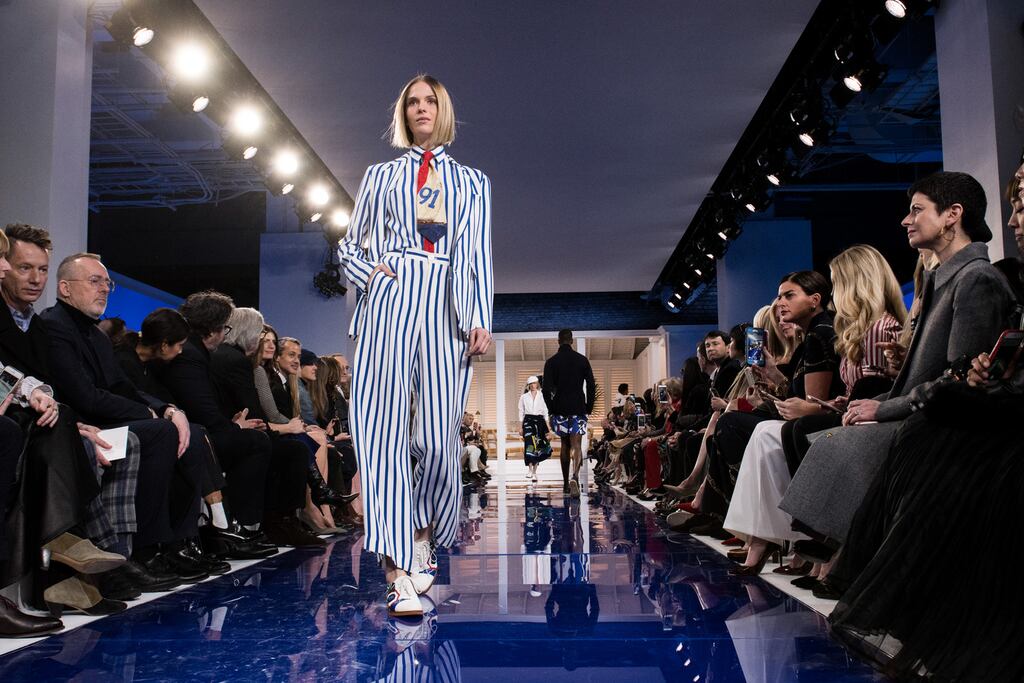Ralph Lauren is targeting sales growth over the next three years that’s faster than Wall Street’s estimates, with the fashion brand aiming to pick up new customers and continuing to raise prices.
The New York-based apparel company is targeting revenue growth in the mid- to high-single digits in each of the next three fiscal years, including the current one, according to a statement published Monday in advance of a presentation to investors. The new outlook, which excludes currency-related fluctuations, covers the fiscal years that run through the first three months of 2025.
“This company is now poised to accelerate growth and value creation, and we have the momentum to prove it, chief executive Patrice Louvet said in an interview. Canada and the US in particular represent a growth opportunity that investors may be underestimating, he added.
Ralph Lauren’s strategy builds on the company’s work in recent years to close unproductive stores while cutting back on promotions and offering pricier items. If achieved, high-single digit sales growth would outpace the average of estimates compiled by Bloomberg, which show analysts expecting expansion of 1.6 per cent in the current fiscal year and about 4.5 per cent in the following two periods.
If you worked in the UK there is an opportunity to boost your pension
Trump trade - a quick guide to US tariff plans
Declining birth rate means there will be fewer people of working age to support the growing number of pensioners
‘The motor industry is changing, but we’re here to stay’: BMW Ireland’s boss on EVs, innovation and the road ahead
Ralph Lauren is targeting average price increases for it merchandise in the mid-single digit range over the next several years, Louvet said. The figure, known as average unit retail, has climbed 64 per cent since the company’s last investor day in 2018, he added. The company has achieved this, in part, by decreasing its reliance on discounts in department stores. Ralph Lauren now sells nearly two thirds of its products via its own stores and websites.
Those higher average prices have helped to boost sales and attract more affluent customers that are willing pay higher prices — a trend retailers refer to as “elevating the brand. Ralph Lauren won’t tarnish its renewed cache by resorting to heavy discounting this holiday season like it has in past years, Mr Louvet said.
Still, he anticipates big promotions at the end of the year from retailers that are trying to regain lost market share — or whittle down excess merchandise that has built up because of supply-chain issues.
“We want to be a lifestyle luxury company, he said. “We won’t be oblivious to the environment we operate in, but we will not resort to aggressive promotional activity to drive our business.”
Ralph Lauren will continue to cultivate younger customers, who Mr Louvet credits with helping to push online sales to 26 per cent of revenue. He expects that figure to reach about 33 per cent in the next several years.
The company is also betting on growth in women’s merchandise in the long term and ultimately aims to have the category represent half of sales — up from around 30 per cent now. Louvet said he wants to seize on the fact that more than half of the customers who come into Ralph Lauren stores are women, but they are often shopping for male friends and family.
Ralph Lauren is targeting operating margin of at least 15 per cent by fiscal 2025, higher than Wall Street’s expectations.
The company, which reiterated its earlier fiscal 2023 guidance from August, is planning to spend about 4 per cent to 5 per cent of revenue on capital expenditures annually during the three-year span. Ralph Lauren aims to open several hundred more stores in the next three years, mainly in China, South Korea and Japan, Mr Louvet said.
In the US, the company has space to expand in California and the West Coast, he said. Ralph Lauren plans to open 15 to 20 more stores in the US through the beginning of 2025.
The company will return approximately $2 billion (€2 billion) to shareholders over the period via dividends and share repurchases. — Bloomberg














